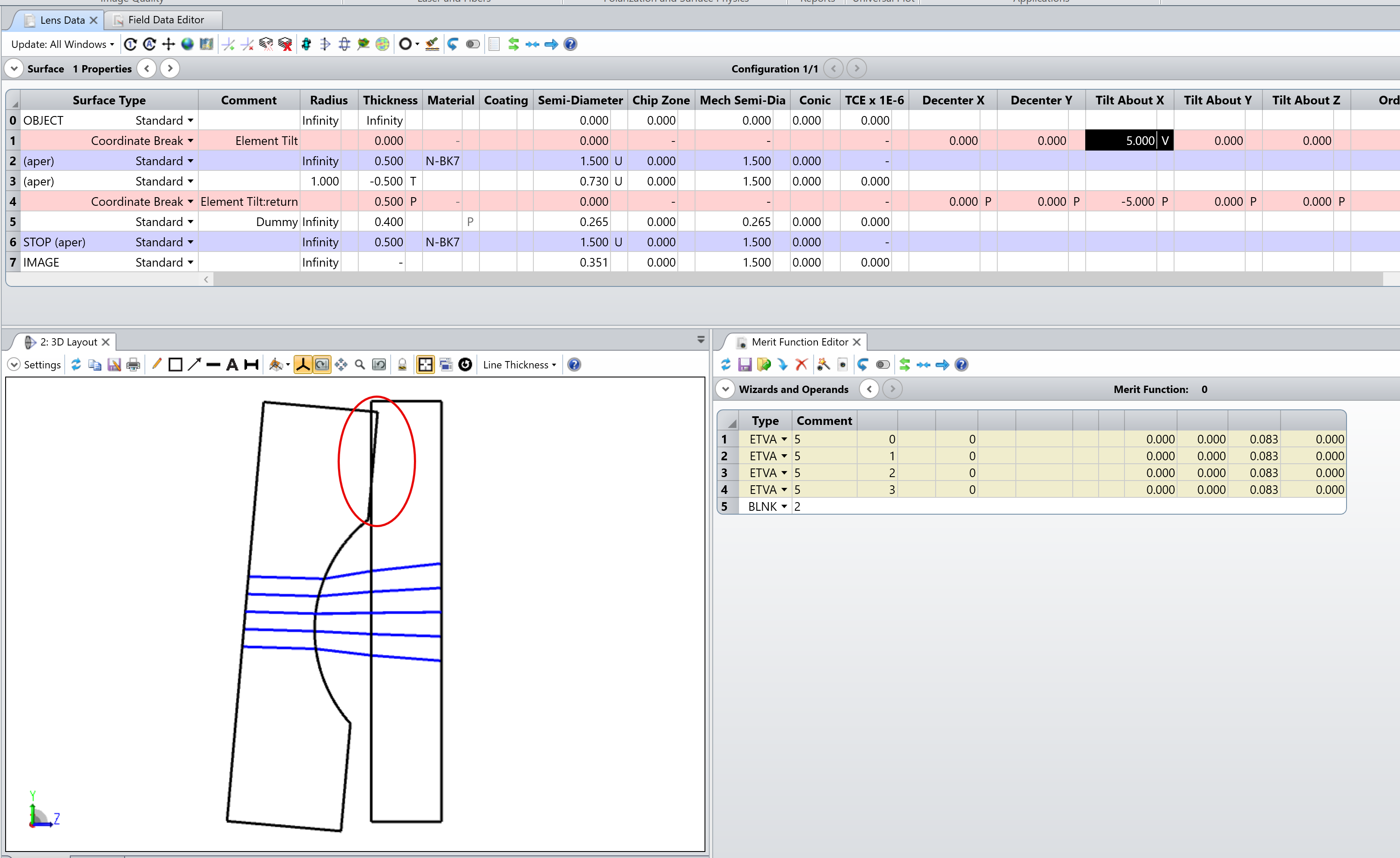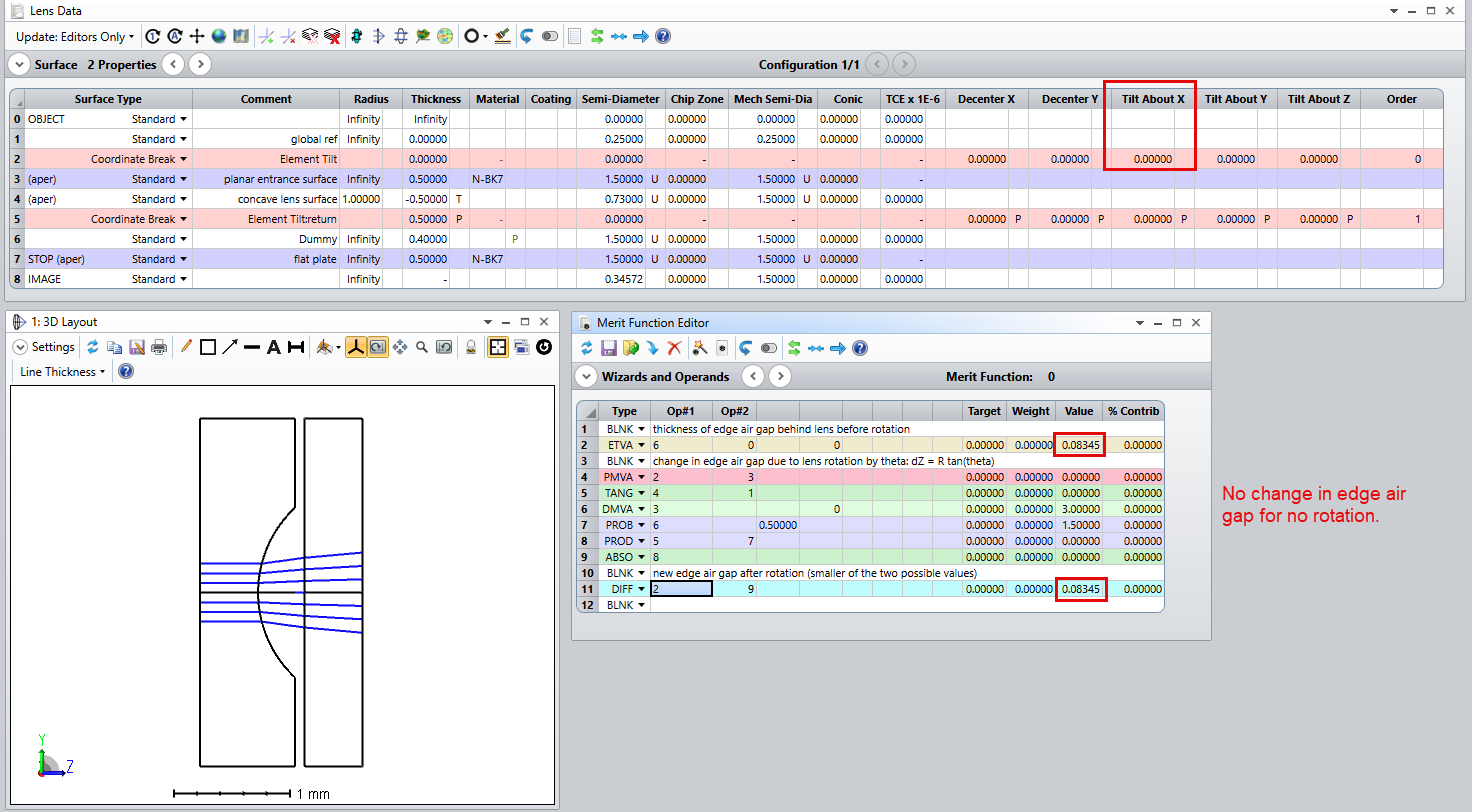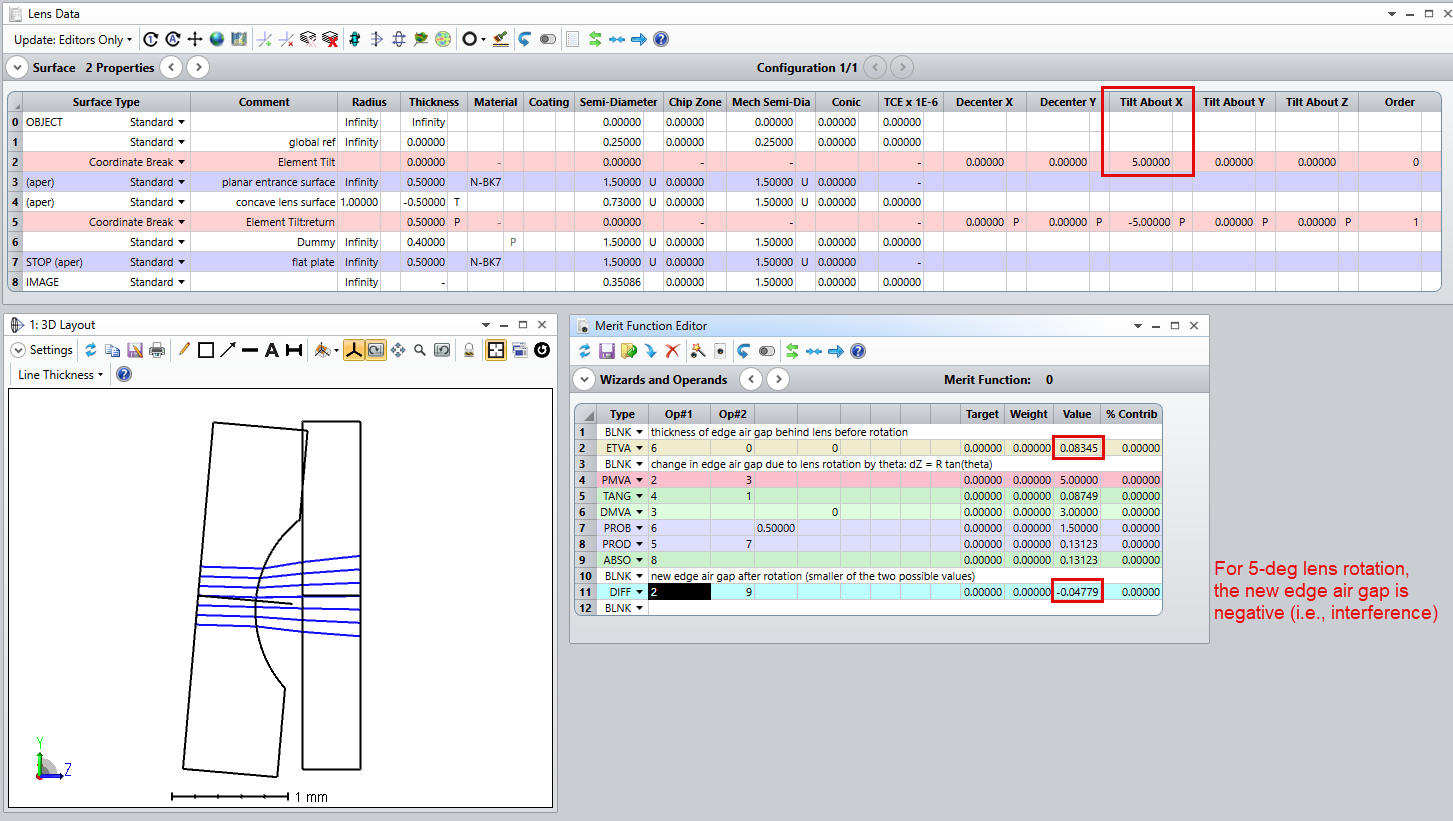I seem to be tripped up a simple problem. I want to identify the edge interference (negative edge air thickness) shown in the red circle.
What merit function will work?

Thanks for any help or guidance,
John
I seem to be tripped up a simple problem. I want to identify the edge interference (negative edge air thickness) shown in the red circle.
What merit function will work?

Thanks for any help or guidance,
John
Best answer by Jeff.Wilde
One option is to just employ simple geometry. It takes a few MF operands to do the calculation, which makes it slightly tedious but otherwise straightforward. For a rotation by theta, the trailing air gap at the edge of the lens changes by dZ = R tan(theta), where R is the mechanical semi-diameter and theta is assumed to be a reasonably small angle.
Here is an example before rotation,

and then after a 5-degree rotation,

Regards,
Jeff
Enter your E-mail address. We'll send you an e-mail with instructions to reset your password.